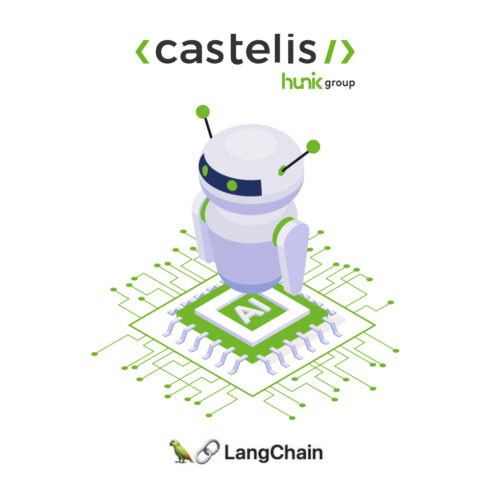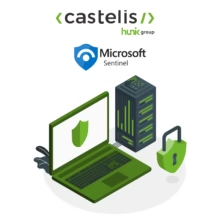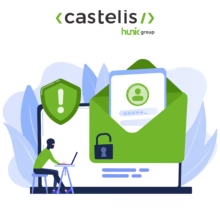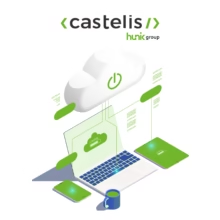
Optimizing the use of LLMs in business thanks to RAG (Generation Augmented by Recovery)
Large language models (LLMs) are powerful tools capable of processing and transforming text.
But be careful, “understanding” is still a big word: These models don’t really “understand” like we do; they work with statistical probabilities based on vast data sets.
Today, retrieval-augmented generation (RAG) models are changing the game for businesses. In this article, we will explore how to maximize their potential while keeping our feet firmly on the ground regarding their limitations, so that they truly meet the needs of businesses.
Understanding the strengths and limits of LLMs
Strengths
LLMs have an impressive ability to manipulate text: They can analyze, summarize, and restructure complex information into clear, well-organized, and contextually relevant content.
Their strength lies in their ability to respond contextually to user queries, understanding (at least statistically) the nuances of natural language.
These models also enable the automation of information retrieval, saving valuable time by avoiding lengthy manual searches.
From text generation to semantic analysis, LLMs are powerful allies for boosting productivity, automating repetitive tasks, and enriching a company’s knowledge base through efficient synthesis.
Limits
However, there are pitfalls to be aware of with LLMs: Hallucinations, for example, are a real problem. These occur when the models generate erroneous information because they rely solely on probabilities, not verified facts. The result can be convincing but unfortunately inaccurate, which can be problematic in a professional setting where precision is crucial.
LLMs can also face difficulties with complex, technical, or ambiguous topics, especially when lacking well-prepared data. Questions requiring specialized knowledge may be misinterpreted, leading to erroneous conclusions.
Lastly, LLMs have a notable weakness: they are trained on static data. This means they aren’t aware of recent updates or new regulations, which can make them outdated on certain subjects. Therefore, it is essential not to use them as an independent knowledge base without a robust framework to ensure the quality and relevance of the responses provided.
Considering integrating artificial intelligence into your business processes, but have doubts about its limitations? Contact our experts for a free needs assessment. Together, we will define a solution tailored to your challenges.
Solutions to make LLMs reliable in business: the RAG approach
The RAG Model (Retrieval-Augmented Generation)
For LLMs to be truly useful in business, a hybrid approach is necessary. The RAG model combines text generation by the LLM with the retrieval of information from reliable databases. In other words, the LLM handles the form, while the content comes directly from the company’s databases, ensuring both accuracy and relevance.
This combination helps to overcome the main limitations of LLMs by relying on validated sources of information. For example, when responding to a question, the LLM will generate the text based on data retrieved in real time, ensuring up-to-date information and limiting the risk of hallucinations.
The RAG model can also be optimized by using specialized databases for different sectors, allowing answers to be better tailored to each specific context. This customization makes responses more relevant and reduces ambiguity.
Learn more about how the Langchain framework enables the development of advanced AI applications.
Proven techniques to improve results
Several techniques can be implemented to enhance the performance of LLMs in professional contexts:
- Reformulating questions: To avoid ambiguities, agents can reformulate user questions to clarify the intent and ensure better accuracy in the answer.
- Answer validation: An automated validation system can compare generated answers to the original sources to verify their accuracy and prevent errors.
- Intent detection: Specialized agents can be activated depending on the identified intent. For example, a financial query triggers an agent dedicated to the finance domain for a more precise answer.
- Self-evaluation agents: These agents assess the consistency and reliability of generated answers, identifying any inconsistencies and adjusting the answer before providing it.
In the context of a RAG model, data quality is crucial to ensure the accuracy of responses. As the saying goes in computing: “Garbage in, garbage out.” The underlying data must be reliable and well-structured to ensure precise and relevant results. In addition, LLM-based programs can improve internal data quality through several methods:
- Tagging and reformulating data: These programs tag and rephrase content to make it more accessible and understandable.
- Data cleaning: Removing duplicates, correcting errors, and harmonizing formats to ensure consistent quality.
- Identifying gaps: Detecting missing or inconsistent information, with recommendations to fill these gaps.
- Data enrichment: Generating additions by combining various reliable sources to enrich the knowledge base.
- Automatic updates: Integrating new data based on developments to maintain an up-to-date knowledge base.
Using dynamic databases also ensures that information stays up-to-date by incorporating regular updates. This guarantees that the responses provided by LLMs are based on current and valid data.
Discover how the RAG model can transform your AI tools into a reliable and high-performance resource. Book a consultation with our specialists and explore real-world cases tailored to your industry.
Concrete examples of RAG applications
The RAG approach allows for many practical applications in business. Here are some examples to illustrate how this approach can transform business processes and improve efficiency:
- RAG Chatbot for customer support or access to internal information: Responses are precise and tailored to each user’s context, thanks to updated databases.
- Meeting summaries automatically generated from transcriptions: By combining LLMs with retrieval tools, it’s possible to generate accurate summaries based on validated key points.
- Product sheets generated from company databases: Content is generated consistently, based on validated information to ensure quality.
- Writing marketing emails or narrative reports based on CRM data: Retrieval-augmented LLMs enable personalized messages while ensuring the information used is accurate.
- Synthesizing key information from complex documents, such as contracts or logs: By integrating LLMs with specialized databases, it’s possible to generate understandable and relevant summaries, even for technical documents.
These examples perfectly illustrate the idea that the LLM handles the presentation and structuring of the text, while the content is based on validated company data, ensuring both accuracy and relevance.
Using Langchain, Castelis has already developed advanced AI solutions for some clients to leverage company data.
Ready to see the concrete benefits of the RAG approach for your company? Contact us for a personalized demonstration and discover solutions designed to address the specific challenges of your sector.
How to implement an “Enterprise-proof” RAG solution?
For an RAG solution to be truly “Enterprise-proof,” a structured and rigorous approach must be followed, taking into account both technical and organizational aspects, as well as data quality. Here are the steps we implement for our clients:
6 key steps to success
- Understand LLM behavior: Conduct POCs (Proof of Concepts) to identify relevant use cases and assess their limitations. This helps to see how the models behave in real-world scenarios and anticipate necessary adjustments.
- Create a robust technical infrastructure:
- Integrate a high-performance retrieval engine (such as Elasticsearch or a vector-based index) to ensure that information is found quickly and efficiently.
- Set up a monitoring system to evaluate the quality of responses and detect potential issues.
- Improve data quality:
- Structure databases with enriched metadata to facilitate search and retrieval.
- Validate and keep sources up-to-date to ensure accurate and relevant information.
- Develop specialized prompts: Design precise instructions to restrict the model to information available in retrieved chunks, ensuring that responses are based on reliable data.
- Set up quality control mechanisms:
- Use verification agents to examine responses and detect inconsistencies.
- Use human or automated validation for critical responses to guarantee the reliability of provided information.
- Adopt a continuous improvement approach: Adjust prompts, enrich databases, and integrate user feedback to constantly improve system performance.
By following these steps, companies can ensure that their RAG solution is reliable, effective, and well-suited to business needs while minimizing risks related to the use of LLMs.
Looking to deploy a reliable and tailored RAG solution for your business environment? Our team can guide you at every step, from analyzing your data to implementation. Schedule an appointment with a consultant to kickstart your project.
LLMs and RAGs for optimized processes and increased competitiveness
The hybrid LLM + RAG approach offers businesses the chance to leverage LLM capabilities while significantly improving the reliability and relevance of the information produced. By framing the use of these models with validation mechanisms, appropriate infrastructure, and rigorous data management, it is possible to make these tools “Enterprise-proof.”
This not only enables the provision of high-quality, well-structured, context-specific answers, but also minimizes the risks of hallucinations and inaccuracies. With a rigorous approach, businesses can fully benefit from this technology to optimize their processes and strengthen their competitiveness.
The future of hybrid generative AI is already within your reach. By combining the capabilities of LLMs with the accuracy of RAG models, companies can transform the way they work and maximize their competitiveness.
Don’t let your data go untapped. Adopt a hybrid approach with RAG models to boost your performance and secure your processes. Our experts are here to guide you toward a tailored solution. Contact us today!
Voir plus de Actualités

Why Microsoft Sentinel is Essential for Cyber Threat Management: A Practical Guide for CIOs

Top best practices to improve email security with DMARC

Cloudflare Zaraz Guide: Manage your third-party scripts at the Edge for better web performance
